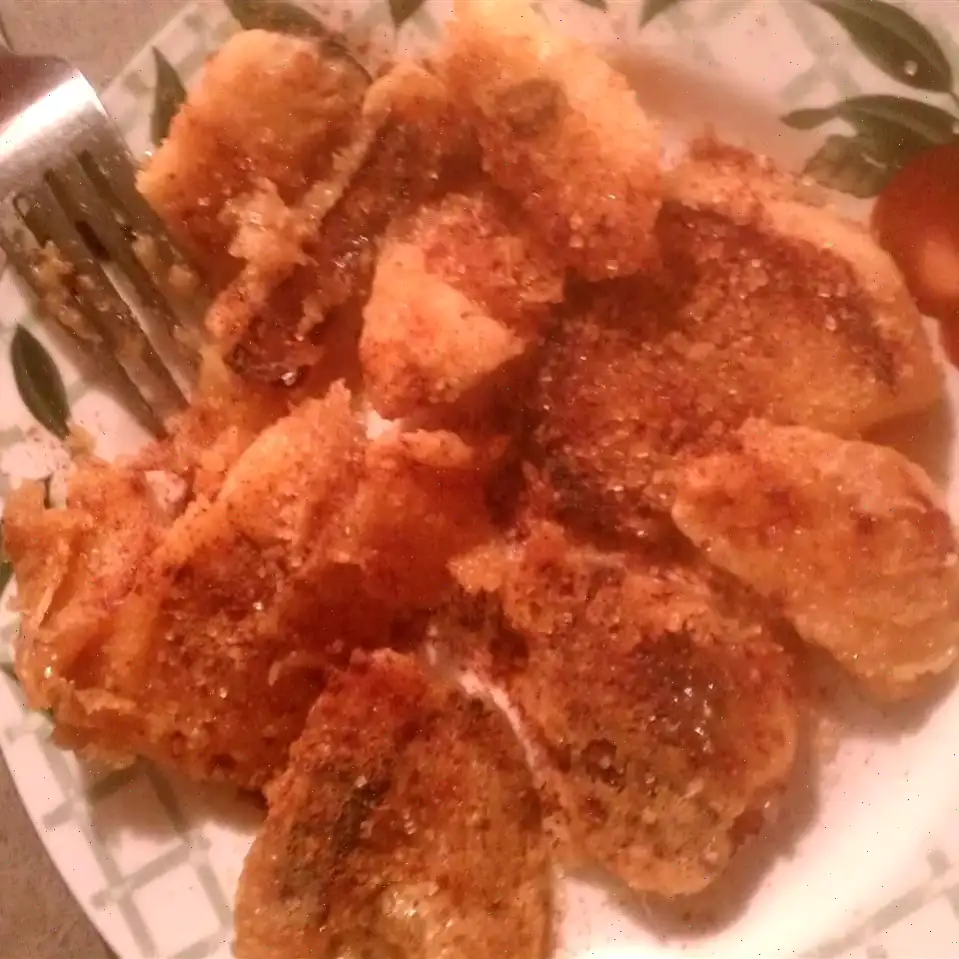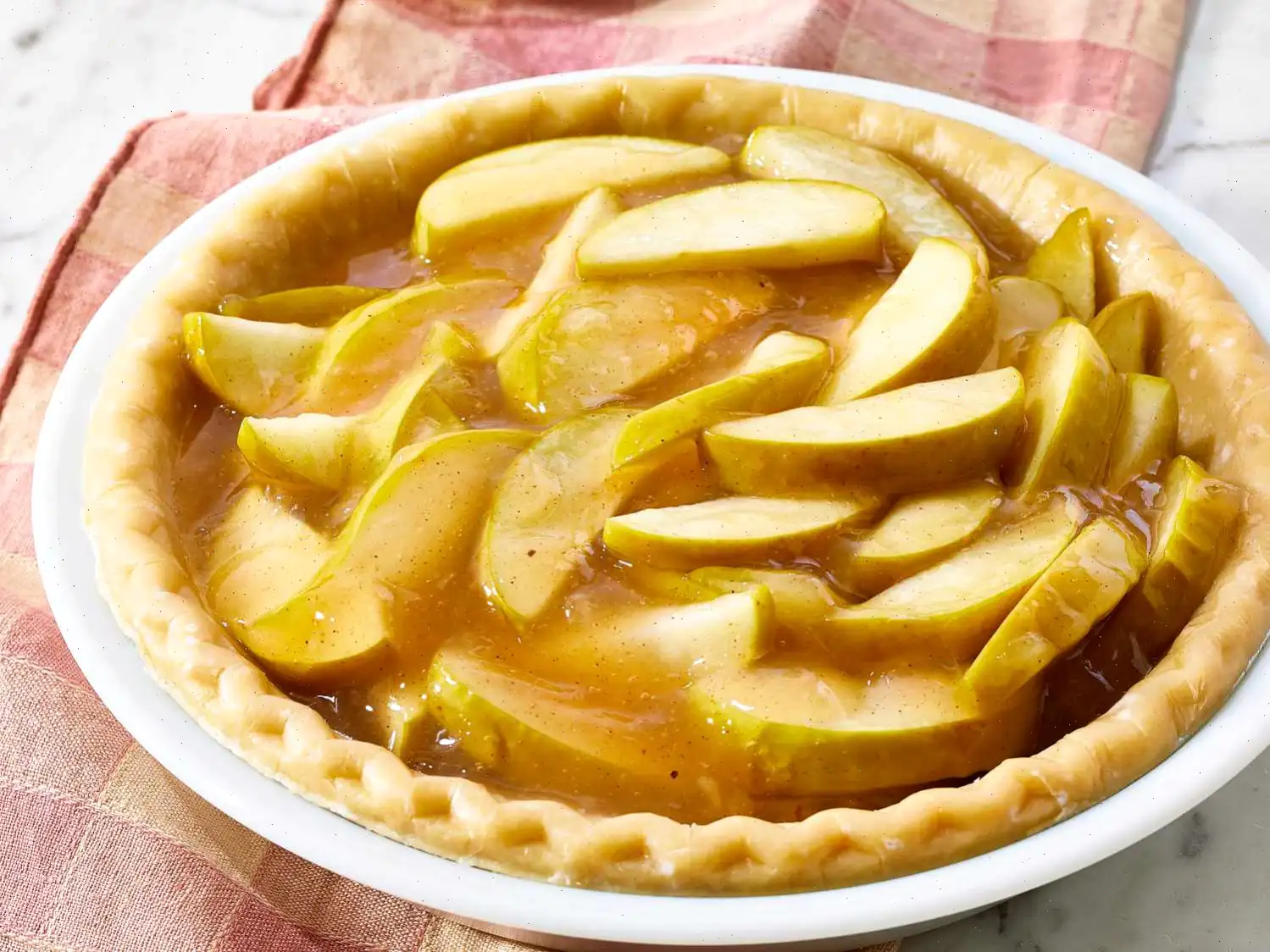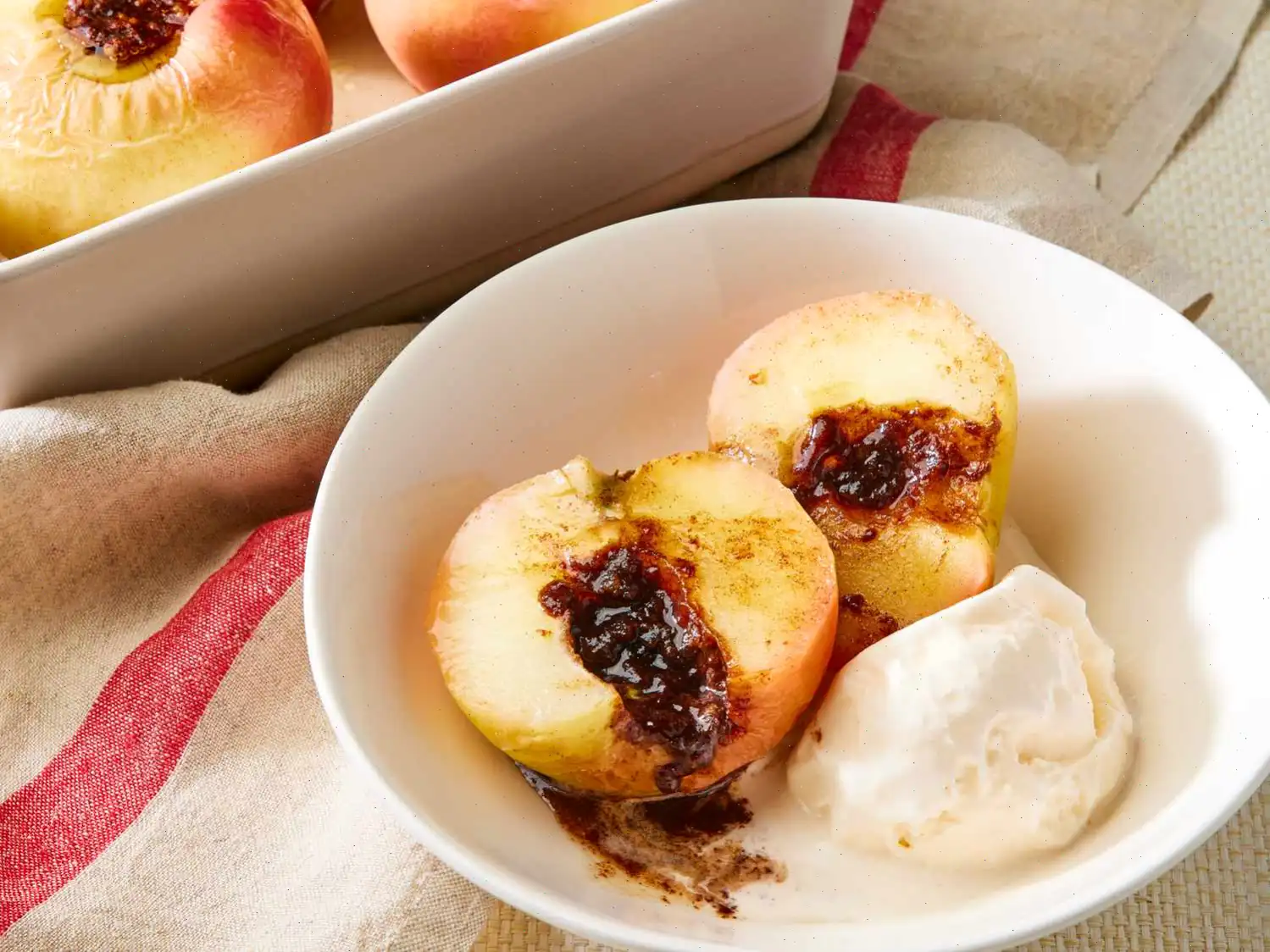
Fried Quinces, in the Manner of the Countess Recipe
Fried Quince with Coconut Oil and Demerara Sugar
Servings: 6
Preparation Time: 15 minutes
Cooking Time: 20 minutes
Ingredients
- 1 tablespoon clarified butter
- 1 pounds quinces - peeled, cored, and cut into wedges
- cup all-purpose flour
- 1 tablespoon white sugar
- 1 pinch salt
- cup dark beer
- 1 dash vanilla extract
- 2 teaspoons finely grated fresh lemon zest
- 3 tablespoons coconut oil, or as needed
- 3 tablespoons demerara sugar
Directions
Step 1: Heat the clarified butter in a skillet over low heat. Add the quince wedges to the pan and cover. Gently cook the quince for about 15 minutes until softened. Remove from heat and set aside.
Step 2: In a mixing bowl, combine the flour, white sugar, and salt. In a separate bowl, mix the dark beer, vanilla extract, and lemon zest. Gradually add the dry ingredients to the wet ingredients, stirring until you have a smooth batter.
Step 3: Heat the coconut oil in a skillet over medium heat. Once the oil is hot, dip the quince wedges into the batter and fry them in batches until golden brown and crispy.
Step 4: Transfer the fried quinces to a warm platter as you continue frying the rest. Once all the quinces are fried, sprinkle them with demerara sugar before serving.
Nutrition Facts (per serving)
- Calories: 215
- Fat: 9g (12% Daily Value)
- Saturated Fat: 8g (38% Daily Value)
- Cholesterol: 6mg (2% Daily Value)
- Sodium: 33mg (1% Daily Value)
- Total Carbohydrates: 32g (12% Daily Value)
- Dietary Fiber: 2g (8% Daily Value)
- Total Sugars: 8g
- Protein: 2g (3% Daily Value)
- Vitamin C: 16mg (18% Daily Value)
- Calcium: 20mg (2% Daily Value)
- Iron: 1mg (7% Daily Value)
- Potassium: 239mg (5% Daily Value)
* Percent Daily Values are based on a 2,000-calorie diet. Your daily values may vary depending on your calorie needs.
Fried Quinces, in the Manner of the Countess, is a traditional German dessert that combines the delicately sweet flavor of quinces with the rich, warm taste of fried batter. This recipe is a delightful fusion of old-world cooking techniques with a touch of romance. The origins of this dish are steeped in history, likely from the romantic tales of the 18th century German aristocracy. While the exact historical origins of this specific recipe remain unclear, it is said to be named after a countess who would have enjoyed this luxurious treat at lavish feasts.
History and Origin
Quinces, a fruit that has been cultivated since ancient times, were highly prized in European royal courts for their unique flavor and versatility in desserts. The recipe for "Fried Quinces, in the Manner of the Countess" likely originated in the noble kitchens of Germany during the Baroque period, when extravagant feasts were common. The Countess, a fictional or possibly real aristocrat, would have relished the contrast of the soft, cooked quinces with the crispy fried batter. Today, this dish is still a beloved part of German culinary heritage, often making an appearance in historical cookbooks and festive gatherings.
Regional Variations
While the basic concept of fried quinces is widely enjoyed throughout Germany, regional variations exist, particularly in the use of different fats for frying. In some areas, lard or butter might replace coconut oil for a more traditional taste. Additionally, the batter's composition can vary, with some recipes using different spices or flavorings, such as cinnamon or nutmeg, to evoke the warmth of autumnal flavors. The use of dark beer in the batter is a distinctive feature of this recipe, adding depth and a slight bitterness that balances the natural sweetness of the quinces.
Differences from Similar Dishes
Fried Quinces, in the Manner of the Countess, distinguishes itself from other fruit-based fried desserts in a few key ways. Unlike deep-fried apple fritters or traditional pear-based desserts, quinces have a firmer texture and a more complex, tart flavor, which softens when cooked but retains a delightful bite. The batter is light and crisp, not overly sweet, and enhances the natural flavor of the quinces. Another unique element is the use of coconut oil, which imparts a subtle tropical note to the fried fruit, setting it apart from other European fried desserts that often rely on butter or vegetable oil.
Where to Serve Fried Quinces
This dish is typically served as a dessert, often at festive occasions or dinner parties. It pairs beautifully with vanilla ice cream or whipped cream, which balances the sweetness and adds a creamy contrast to the crispy fruit. In Germany, it is not uncommon to find Fried Quinces at autumn festivals, especially in areas where quinces are in season. They might also be featured as part of a luxurious breakfast or brunch spread for special occasions. In some regions, its even served as a traditional holiday treat, evoking the warmth and hospitality of a bygone era.
Interesting Facts
- Quinces are one of the oldest cultivated fruits, believed to have been grown by ancient civilizations such as the Greeks and Romans.
- The fruit is often overlooked today, but it was once considered a symbol of love and fertility in ancient cultures.
- In some cultures, quinces are used to make jams, jellies, and even drinks like quince liqueur.
- Fried Quinces, in the Manner of the Countess, is a dish that highlights the noble tradition of combining fruits with rich, decadent ingredients, characteristic of aristocratic German cuisine.
Conclusion
Fried Quinces, in the Manner of the Countess, represents a charming piece of culinary history, offering a glimpse into the tastes and traditions of 18th-century European nobility. This dish combines the natural beauty of quinces with the art of deep frying, creating a unique dessert that has stood the test of time. Whether you are cooking for a special occasion or simply indulging in something sweet, this recipe offers a delicious and historically rich treat that will delight your senses.








